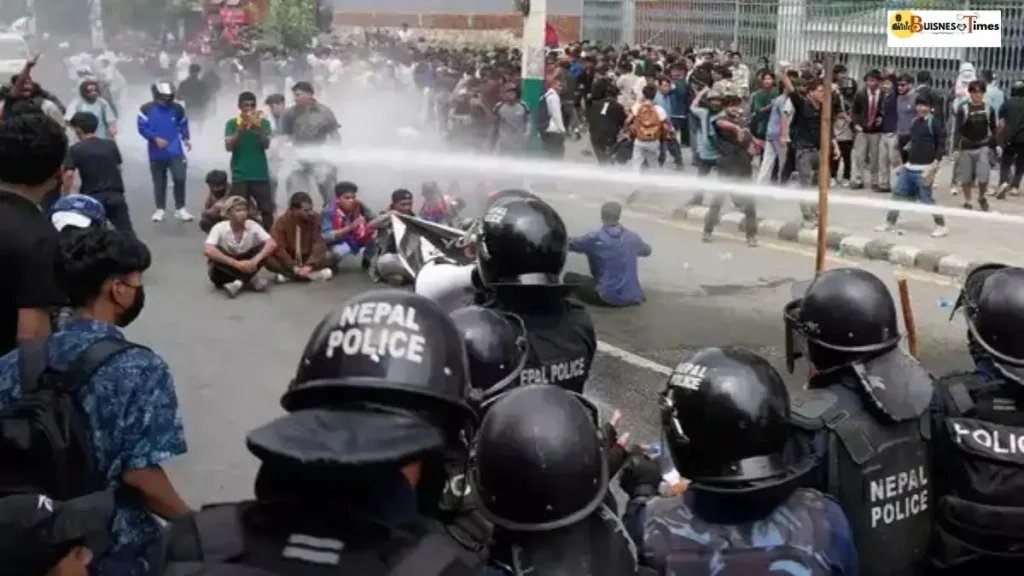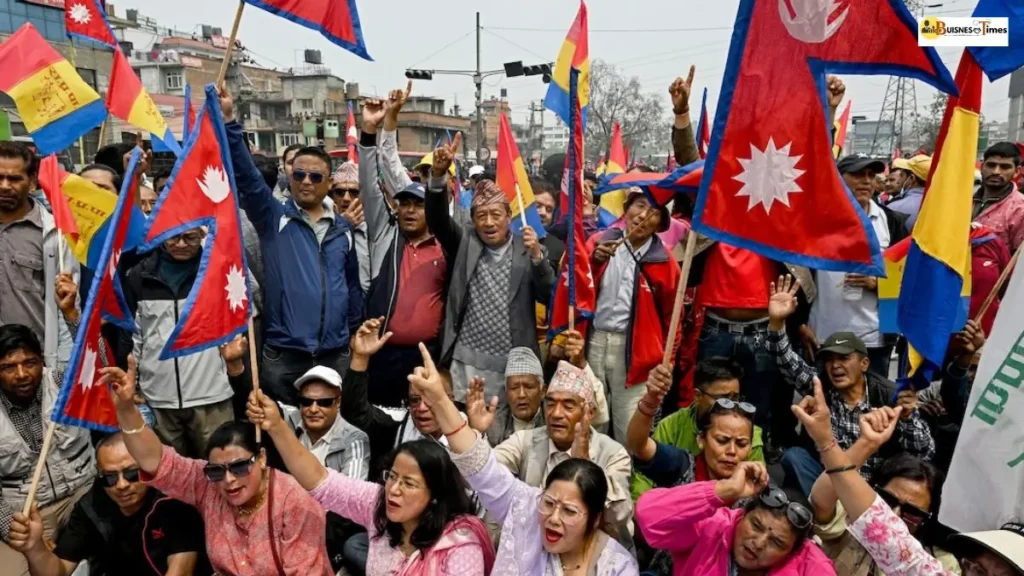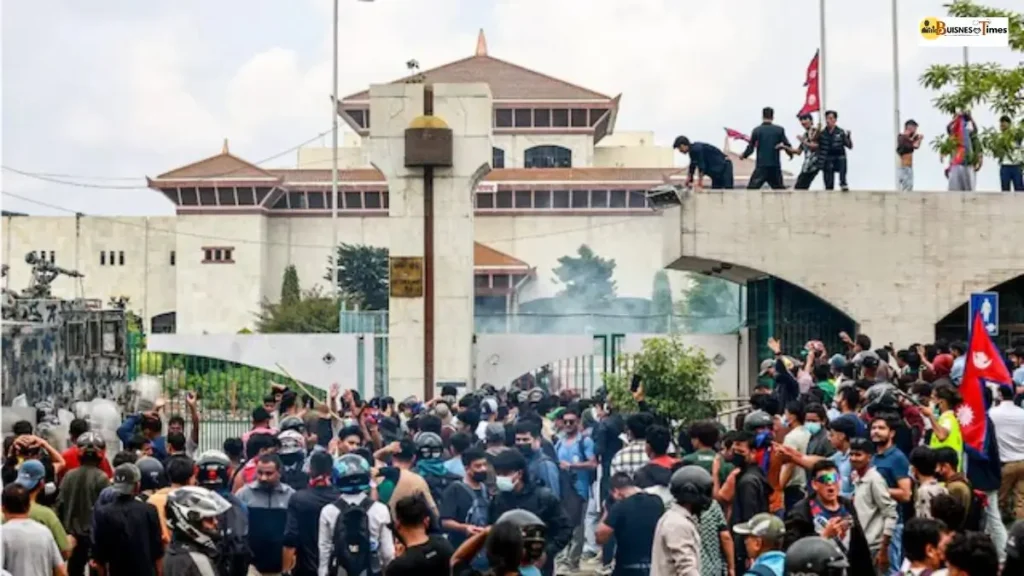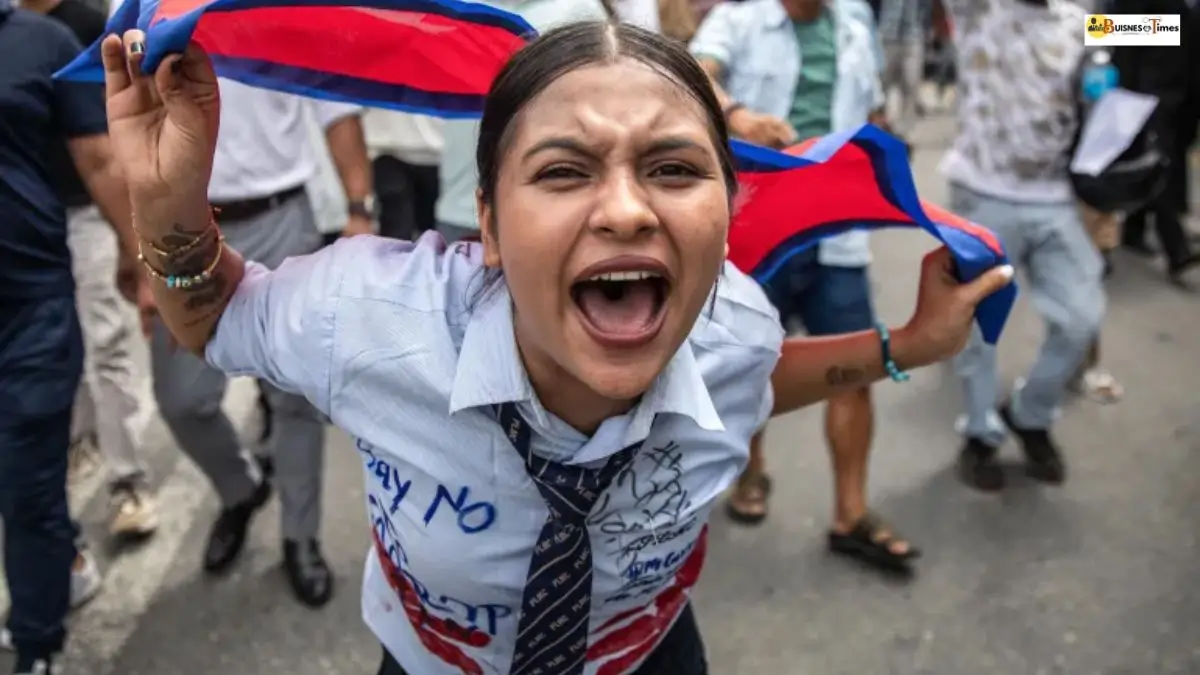Nepal is currently witnessing one of the worst political and social unrests in decades, triggered by a social media ban in Nepal, deep-rooted corruption, and growing frustration among the country’s youth. The protests, which have spread across multiple cities, have already claimed more than 19 lives and left hundreds injured, according to reports.
This wave of protests has put immense pressure on Nepal’s fragile political system, raising concerns about stability in the Himalayan nation of 30 million people.

The Spark: Social Media Ban in Nepal
The immediate cause of the protests was the government’s sudden social media ban in Nepal last week. The administration blocked platforms like Facebook, Instagram, WhatsApp, YouTube, and X (formerly Twitter), citing the need to curb fake news and hate speech.
The government introduced new rules that required social media companies to officially register in Nepal. Failure to comply would mean an automatic ban. By midnight Thursday, 26 major social media platforms went dark across the country, sparking outrage and panic among users.
What may have been intended as a measure to regulate online platforms quickly became the symbol of authoritarian overreach. Citizens, particularly young people, viewed the social media ban in Nepal as a direct attack on their freedom of expression.
Youth-Led Protests Turn Deadly
The protests that followed the social media ban in Nepal were largely youth-driven, with demonstrators aged between 13 and 28 leading the movement. This generation, often referred to as Gen Z, feels increasingly disconnected from the country’s political class.
Clashes between protesters and security forces escalated rapidly. Security forces used live ammunition, tear gas, and water cannons to disperse crowds. According to Reuters, at least 19 people were killed in the violence, making it the deadliest political crisis Nepal has faced in decades.
Images and videos from Kathmandu, the capital city, showed protesters defying a government-imposed curfew in the city center. Despite the government’s decision to later lift the social media ban in Nepal, the protests did not stop, showing that frustration runs much deeper.
Longstanding Corruption and Economic Struggles
For many young Nepalis, the social media ban in Nepal was simply the last straw. Underneath lies decades of resentment toward rampant corruption and poor economic opportunities.
The youth unemployment rate in Nepal was 20.8% in 2024, according to the World Bank. Frustrated with a lack of jobs and career opportunities, many young Nepalis are forced to migrate abroad. In fact, over one-third (33.1%) of Nepal’s GDP comes from remittances, highlighting the country’s dependency on its diaspora workforce.

A viral online campaign against “Nepo Kids”—the children of politicians flaunting their wealth and luxury lifestyles—further fueled public anger. This movement highlighted the sharp divide between the ruling elite and ordinary citizens struggling with inflation, unemployment, and lack of infrastructure.
The social media ban in Nepal amplified these frustrations, as it cut off one of the few spaces where young people could voice their dissent and demand accountability.
Nepal’s Turbulent Political History
Nepal is no stranger to political instability. Since abolishing its 239-year-old monarchy in 2008 after a decade-long civil war, the country has seen more than a dozen governments come and go.
The current unrest, however, is the most serious crisis in recent memory. Unlike earlier movements driven by political parties or ideologies, this uprising is led by young, ordinary citizens who feel betrayed by the political system. The social media ban in Nepal has, therefore, become symbolic of a larger struggle for freedom, transparency, and accountability.
Government’s Response and the Road Ahead
After facing immense backlash, the government reversed its decision and lifted the social media ban in Nepal. However, the damage was already done. Trust between the government and citizens, especially the youth, is at an all-time low.
The government’s use of heavy-handed tactics, including curfews, mass arrests, and internet blackouts, has only deepened anger. Rights groups and international organizations have criticized the use of force and warned of further instability if the underlying issues are not addressed.
For Nepal’s leaders, the crisis presents a tough challenge. Merely lifting the social media ban in Nepal will not end the protests. Citizens demand accountability, anti-corruption measures, and concrete steps to create better job opportunities.
Why the Social Media Ban in Nepal Matters Globally
The social media ban in Nepal is not just a domestic issue; it has drawn international attention. In an increasingly digital world, restricting access to online platforms is seen as an attack on fundamental freedoms.
Countries like India, the United States, and members of the European Union are closely monitoring the situation. Human rights organizations warn that if Nepal continues down this path, it risks isolation and loss of international credibility.

The events also serve as a reminder of the growing influence of digital activism. Even in countries with limited internet penetration, platforms like Facebook, WhatsApp, and YouTube play a crucial role in shaping public opinion and organizing movements.
What Lies Ahead for Nepal?
The coming weeks will be crucial. The government must decide whether to engage with protesters through dialogue or continue with a heavy-handed approach. Experts believe that if corruption is not addressed and youth unemployment remains high, unrest could become a recurring issue.
For now, the social media ban in Nepal has become a turning point in the country’s political journey. It has united young people across regions, classes, and backgrounds in a demand for accountability and better governance.
The unrest in Nepal shows how quickly political tensions can escalate when governments restrict freedoms. What began as a social media ban in Nepal has transformed into a nationwide movement demanding justice, transparency, and opportunity.
Whether Nepal’s leaders learn from this crisis or continue to repeat the mistakes of the past will determine the country’s future stability.
Disclaimer : This article is written for informational purposes only. The situation in Nepal is evolving, and readers are advised to follow trusted news sources for real-time updates.

